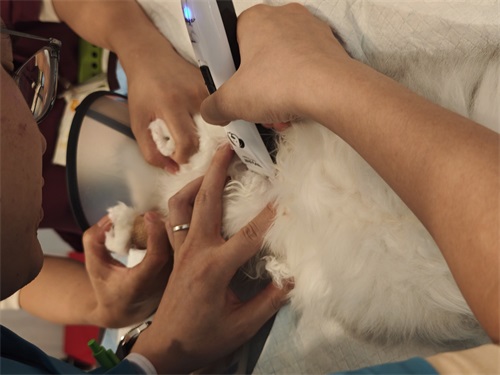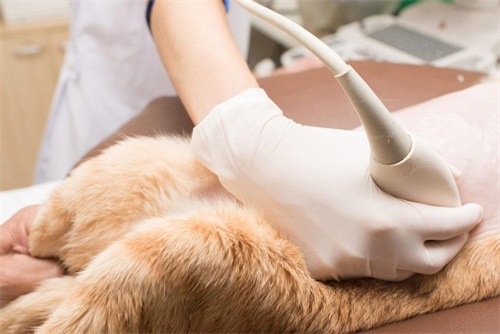In today’s rapidly advancing world of veterinary medicine, technology is not just a supporting tool—it is a driving force behind modern animal healthcare. Among the many technological innovations reshaping veterinary practices, ultrasound imaging stands out as a game-changer. Known for its non-invasive and real-time diagnostic abilities, ultrasound has revolutionized the way veterinarians diagnose, monitor, and manage health issues in both livestock and companion animals.

From improved reproductive monitoring in dairy cattle to diagnosing internal organ issues in cats and dogs, ultrasound technology is enhancing the quality, speed, and accuracy of veterinary care. In this article, we’ll explore why ultrasound has become indispensable in veterinary clinics worldwide, combining scientific evidence, practical applications, and insights from global veterinary professionals.
The Rise of Ultrasound in Veterinary Medicine
Over the last few decades, the use of ultrasound in veterinary clinics has grown exponentially. Once considered a luxury used only in research institutions or referral hospitals, ultrasound is now a routine diagnostic tool in many small and large animal practices.
This shift is due to several key factors:
Portability: With the development of lightweight, battery-powered systems, ultrasound machines can now be used in field conditions as easily as in a clinic.
Affordability: Equipment prices have decreased, making high-quality imaging accessible to rural veterinarians and smaller practices.
Training: More veterinary schools around the world are integrating ultrasound training into their core curricula, preparing new generations of vets to use the tool competently.
For example, in the U.S., Canada, Australia, and parts of Europe, the incorporation of ultrasound into routine herd health checks has been reported by major veterinary organizations as one of the most important developments in large animal practice.
Clinical Applications Across Animal Species
1. Reproductive Management in Livestock
In cattle, sheep, and pigs, ultrasound is invaluable for reproductive monitoring. It allows for early pregnancy diagnosis, detection of uterine infections, and monitoring of ovarian activity. In particular, transrectal ultrasonography is widely used in dairy and beef herds for identifying structures like the corpus luteum, follicles, or even early embryonic death.
Foreign veterinary researchers, such as those at the University of Saskatchewan and Wageningen University, emphasize that ultrasound shortens the interval between calving and conception by enabling timely interventions. This ultimately increases reproductive efficiency and herd profitability.
2. Emergency and Internal Medicine in Companion Animals
Ultrasound plays a critical role in small animal medicine. Dogs and cats frequently suffer from internal issues that cannot be diagnosed through physical exams or blood tests alone. Abdominal ultrasonography helps vets detect problems like kidney stones, bladder tumors, liver abnormalities, and intestinal obstructions.
A 2022 study by the Royal Veterinary College (UK) found that over 65% of emergency cases in dogs involved ultrasound as the primary imaging method, leading to faster surgical decisions and better survival outcomes.
3. Cardiac Evaluation
Echocardiography—ultrasound of the heart—is used to diagnose heart diseases in dogs, cats, and even horses. It gives real-time insight into cardiac function, valve performance, and blood flow, making it a preferred tool in veterinary cardiology worldwide.

Why Ultrasound Is a Preferred Tool for Veterinarians
Non-Invasive and Stress-Free for Animals
Ultrasound imaging doesn’t require sedation in most cases, unlike X-rays or endoscopy. This makes it ideal for use in sensitive, pregnant, or elderly animals. It’s also safer since it involves no radiation.
Real-Time Diagnosis
One of ultrasound's most significant strengths is its ability to provide real-time feedback. A skilled veterinarian can move the probe and instantly interpret organ size, texture, and movement, helping make fast, informed decisions.
Highly Versatile
Ultrasound machines are now designed with species-specific presets and probes. Whether it's evaluating the tendons in a racehorse or scanning the uterus of a goat, modern ultrasound equipment adapts to the unique needs of each case.
Data Storage and Review
With digital interfaces and USB storage capabilities, many ultrasound machines—including models like the BXL-V50—allow veterinarians to capture and archive images for comparison over time. This feature supports better case follow-up, especially for chronic conditions or breeding programs.
Veterinary Clinics Around the World: A Shared Experience
Veterinary professionals from different regions report similar benefits from adopting ultrasound:
In Australia, farm vets praise ultrasound for reducing unnecessary culling by accurately identifying non-pregnant cows early.
In Germany, equine specialists use Doppler ultrasound to assess tendon and ligament healing, helping horses return to training safely.
In Brazil, ultrasound helps swine producers evaluate backfat and muscle depth, leading to better selection in breeding programs.
Dr. Clara Jensen, a livestock veterinarian based in Denmark, noted in a recent conference:
"Before ultrasound, we often relied on palpation and guesswork. Now, we see the uterus, the ovaries, even fluid pockets inside. It changed everything."
Improving Client Communication and Clinic Efficiency
Another reason ultrasound has become a game-changer is its value in client communication. Pet and livestock owners can see the live images themselves. Whether it's a fetal heartbeat in a pregnant dog or a tumor in an old cat, the visual impact increases understanding and compliance with treatment plans.
Additionally, ultrasound helps clinics reduce unnecessary referrals. In-house scanning capabilities mean clients don’t have to travel long distances or wait days for diagnostics.

Case Example: How Ultrasound Saved a Goat Farm
In a small farm in France, recurring reproductive issues were affecting milk yield and kidding rates. A local vet brought a portable ultrasound scanner and found that multiple does had persistent uterine infections following miscarriage. With proper treatment and follow-up scans, the kidding rate improved by 30% the next season. Without ultrasound, these infections might have remained undiagnosed, resulting in long-term productivity loss.
Challenges and Limitations
Despite its many advantages, ultrasound is not a one-size-fits-all solution.
Operator Skill Dependence: The quality of diagnosis heavily depends on the vet’s skill. Poor probe handling or incorrect interpretation can lead to misdiagnosis.
Limited Penetration: In very large animals or obese pets, deep organs may be difficult to visualize.
Not a Replacement for All Imaging: In cases where bone, air, or very deep structures are involved, X-rays or CT scans may still be needed.
Thus, training and experience remain critical to maximizing the benefits of this technology.
Looking Ahead: The Future of Ultrasound in Vet Clinics
Artificial intelligence is starting to integrate with ultrasound, helping veterinarians identify patterns and suggest diagnoses. Future developments may include automated scanning, cloud-based diagnostics, and remote consultations with specialists.
Furthermore, telemedicine is on the rise. Portable ultrasound units with wireless connectivity allow field vets to share real-time images with specialists, getting second opinions on complex cases in minutes.
Conclusion
Ultrasound is no longer an optional tool for veterinary clinics—it’s a central part of modern animal healthcare. Its non-invasive, versatile, and real-time capabilities make it indispensable for diagnosing reproductive issues, internal diseases, and guiding treatments across all animal species.
Veterinarians around the world are embracing this technology not just because it's innovative, but because it leads to better outcomes, faster decisions, and greater client trust. As machines like the BXL-V50 continue to advance in clarity, durability, and usability, the reach of veterinary ultrasound will only grow.
In a profession where accuracy, compassion, and quick action can make all the difference, ultrasound imaging is truly a game-changer.
References:
Whitaker, D. A., & Smith, E. (2021). Veterinary Ultrasonography in Food-Producing Animals. Journal of Veterinary Imaging.
Royal Veterinary College. (2022). Use of Ultrasound in Small Animal Emergencies. https://www.rvc.ac.uk
Beef Cattle Institute. (2023). Use of Ultrasound for Growth Evaluation in Cattle. https://www.beefcattleinstitute.org/ultrasound-growth
American Association of Bovine Practitioners. (2023). Field Reproductive Ultrasound Guidelines. https://www.aabp.org
Wageningen University. (2020). Ultrasound Use in European Dairy Herds. https://www.wur.nl/en/news-wur.htm
tags:
Text link:https://www.bxlultrasound.com/ns/850.html


